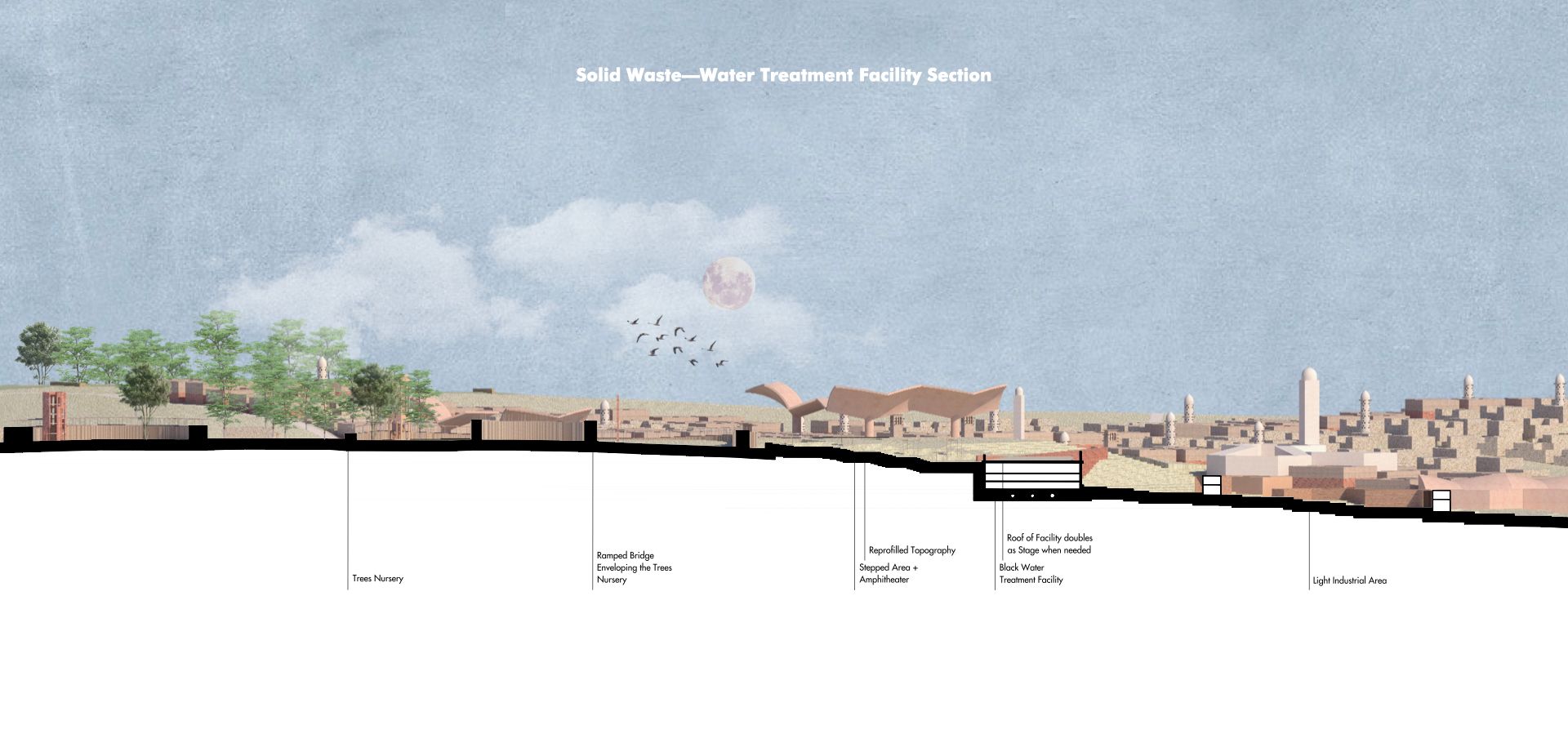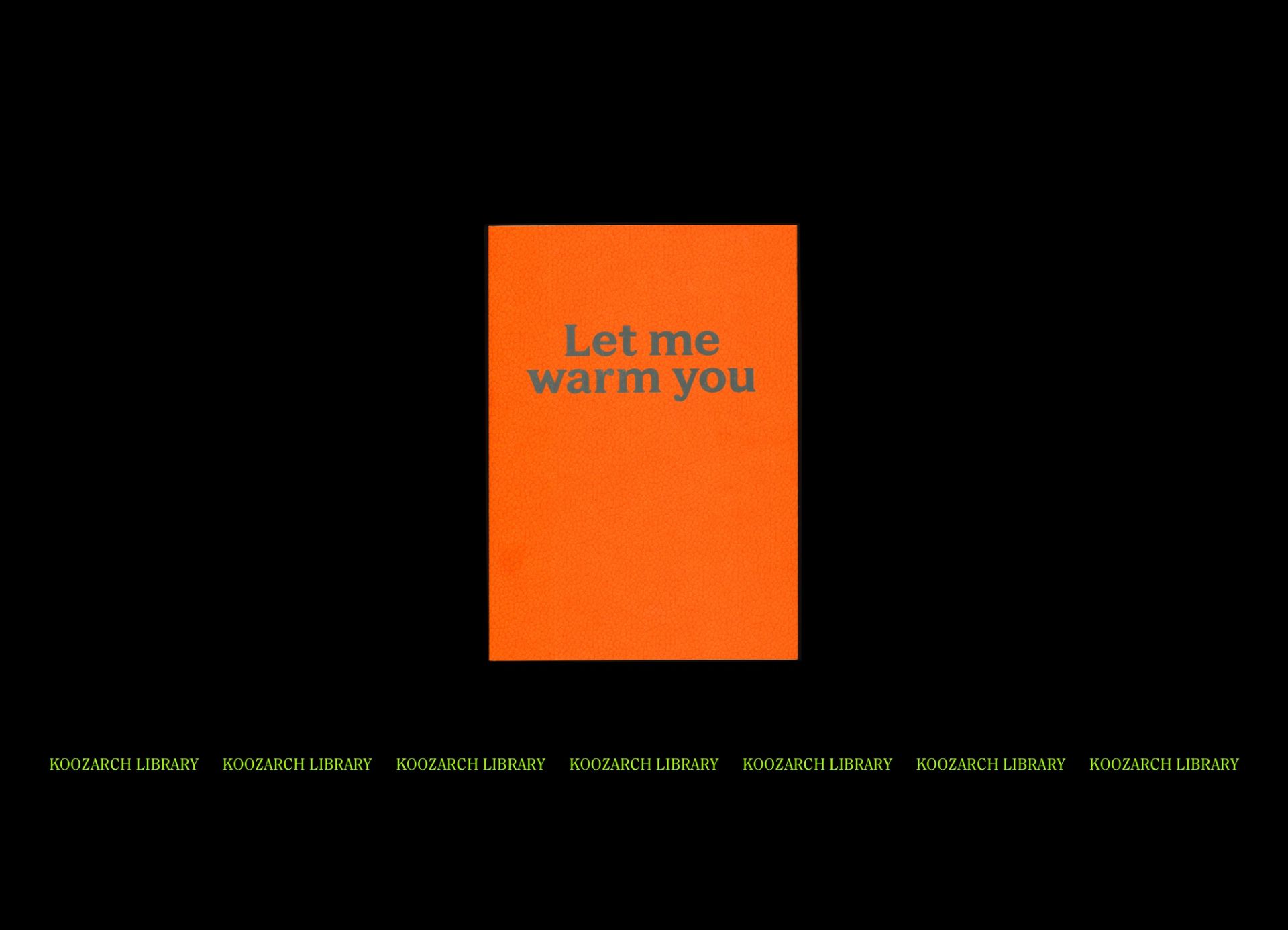The AGORA is located in the center of Wadi Kharouba, Matrouh Governate in Egypt’s Western Desert, as the initial phase of a larger Masterplan along the Valley.
It consists of a public square with a corresponding residential neighborhood designed for the local Bedouin community. The AGORA acts as an Urban Catalyst, motivating further Urban Agglomerations and developments. Wadi urbanization is inevitable as its home to the desert’s limited cultivatable lands, however, urbanization is fragmented and informal, hence, creating a neighborhood in close proximity to the locals’ livelihood is prioritized.
Due to the Bedouins’ isolation from well-serviced urban centers, they rely largely on Social Capital for survival, therefore creating a public space to host, facilitate & encourage these public functions is another top priority. The AGORA connects the neighborhoods of the Wadi and adjacent Wadis. Located at the highest elevation point, +105 m, it occupies a strategic location and is built to service all of Matrouh by hosting diverse functions including; an industrial zone, accompanied by a walkthrough market, a desert forest, grown using treated solid-waste water, from which wood is supplied to the industrial workshops maintaining a closed-loop. The solid-waste water treatment facility also doubles as an amphitheater. Vertical farms doubling as Watch Towers, Pigeon Towers and other productive functions were added to diversify income streams.
Matrouh’s locals’ income majorly depends on tourism and agriculture. These industries have proven vulnerable due to factors such as, tourism seasonality, political unrest, global health crises i.e. COVID-19, climate change, water scarcity and seasonal draughts. The AGORA aims to expand beyond these industries, creating a holistic, resilient economy.
This urban proposal aims to achieve a closed-loop and circular economy, sustainability and self-sufficiency, an adaptive city with dual and triple-function typologies, allowing for adaptive re-use as per the people’s needs and finally, a resilient local economy.
"Agora" received the 1st prize at the GORA PAUMME CAUMME 2020 Competition, also it was shortlisted for the Narmer Palette Competition 2021 and a special mention in the Non-Urban Challenge, 2021.
KOOZ What prompted the project?
MA The project was introduced in the design studio of the tenth and final semester of Architecture School in the German University in Cairo. It was done in collaboration with the Desert Research Center of Egypt. We were asked to come up with an aspirational yet applicable vision of “Wadi” or Valley Urbanism, that is first and foremost based on the water equation of the region and the number of people it can sustain.
KOOZ What questions does the project raise and which does it address?
MA Prior to proposing any urban or architectural intervention along the Wadi, there needed to be a clear definition as to why do so, especially with the challenges that comes with the site; most significantly, the steep topography, the risk of floods and water scarcity. The thing is, Wadi urbanization is inevitable as its home to the desert’s limited cultivable lands, however, urbanization is happening at a slow rate as it is fragmented and informal, hence, creating a neighborhood in close proximity to the locals’ livelihood, one of few, is very important. If the Wadi is left un-urbanized, there is a risk of informal urbanization happening on cultivable lands, exhausting one of the most scarce resources in the Western Desert and in all of Egypt.
Additionally, the project explores what is a viable model of urbanizing for a rural community that is feasible, sustainable and most importantly, appeals to its target residents; the bedouin community. A common pitfall that governmental interventions fall into is that it provides generic social housing typologies that fail to answer to the communities needs, cultural values and way of life, hence, fail to lure in residents. This project is the antithesis of this model. The neighborhood and housing typologies are modeled after what the bedouins have already improvised, built or expressed the need for and the space program of the Agora is formulated based on the defined cultural and economic needs of the locals.
What makes this Agora distinct is that it responds to the genus loci of this site, the needs of the local Bedouin community, the site’s potential as well as limitations.
KOOZ How does the project re-interpret the term 'Agora'?
MA Terminology may differ, but the concept of an “Agora” pre-dates the Greek open public space typology that combines a market place and an assembly for the people. It existed in almost every city or village throughout history, it is merely shaped by its context, reflecting its location and time period. A mall could be considered the Agora of the 90’s and early 2000s, and today’s Agora is most certainly in the virtual realm.
What makes this Agora distinct is that it responds to the genus loci of this site, the needs of the local Bedouin community, the site’s potential as well as limitations. It still merges between a marketplace; a walkthrough “Souq”, and an assembly; an amphitheater sculpted on to the topography, in addition to integrating a diverse range of leisure and economic functions, to create economic opportunity for the locals, such as light-industrial workshops, a desert forest, tourists’ ecolodges and vertical farming towers. All while capitalizing on the topography, the scenic desert and agriculture in the Wadi, merging utility and leisure through multi-use typologies.
KOOZ How does the project seek to empower the local community?
MA The local Bedouin community has very much adapted to the harsh, isolated nature of off-the-grid, desert-life. Even though they share very similar values and hardships, they tend to be tribal and hostile against members of different tribes, due to the sprawled and fragmented population. They also form successful alliances to help maintain peace and protect their people. Their survival so far can be fully attributed to self-mobilization, grassroots organizational efforts and reliance on Social Capital.
The Agora’s role is to provide a central space to host these assemblies and public functions where they deliberate and self-mobilize, further strengthening their Social Capital, and subsequently, achieve a density that makes centralized, public infrastructure and services feasible.
Economic empowerment played a key role as well. Matrouh’s locals’ income majorly depends on tourism and agriculture which have proven vulnerable due to factors such as, tourism seasonality, political unrest and global health crises i.e. COVID-19, climate change, water scarcity and the seasonal draughts. The AGORA aims to expand beyond these industries, creating a holistic, resilient local economy for its residents.
KOOZ What role did sustainability play when developing the project?
MA The space program of the Agora was developed with sustainability and self-sufficiency taking precedence. This can be best highlighted in the treatment of the limited water resources; the number of housing units proposed were based on the number of people the water resources can sustain, after expanding the rainwater harvesting capacity and grey-water reuse. A desert forest is proposed, following the Serapeum desert forest of Ismailia, that solely uses treated wastewater, turning waste into resource and maintaining a closed-loop, circular economy, while offering an additional income stream.
The Agora was designed to be fully walkable, eliminating the need for vehicular transportation apart from the logistical needs of the industrial area and all the materials used were based on the available local materials, such as sandstone, wood and sun-dried bricks. Renewable energy resources, like solar and wind were also extensively used, especially in the housing typologies to achieve self-sufficiency. In this project, consideration for sustainability was not only promoted because of idealistic beliefs, it was simply the most feasible, realistic and applicable design choice.
KOOZ How does the project approach the role of architecture within our society?
MA The architecture proposed from the residential neighborhood, to the Agora including the solid waste water facility doubling as an amphitheater, the walkthrough open-air market cutting through the industrial workshops, vertical farms doubling as Watch Towers, Pigeon Towers and other functions, all aim at meeting the people’s needs, sustaining and improving the locals’ lived experience and quality of life. The proposed functions and typologies support their lifestyles, in alignment with their cultural values and traditions, bringing the community together, while helping them survive, thrive and prosper.
KOOZ What is for you the power of the architectural imagination?
MA Architectural imagination is a powerful catalyst for human evolution, societal progression, cultural and economic development. Any large or small scale challenge we have today, such as the global climate crisis, inequality and famine, have impacted and been impacted by our build environment. Hence, intentful architectural imagination raises the bar of our expectations of how our world should look like and what it should do for us. Hence, it is a powerful transformative tool in mobilizing change and contemplating where we are and what we hope to be.

Bio
Maha Aziz graduated with honors from the German University in Cairo in 2020 with an architectural degree, majoring in Urban Design. Whilst in the fifth and final year of School, she completed a Master’s in BIM Management virtually from Spain, accredited by Il3-Universitat de Barcelona. Additionally, she’s a multi-medium artist, whose work was exhibited in “Koshk Comics” Gallery, year 2016 in the American University in Tahrir Square, and produced illustrations for the recently published “Landscaping Egypt: From the Aesthetic to the Productive” book. In March 2021, she launched oōkrah studio, a virtual design outlet that champions color, maximalism and experimental aesthetics.





